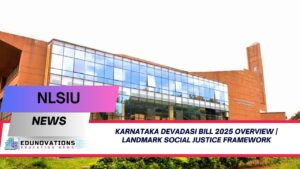Discover how Digital Public Goods for Urban Governance in India 2025 are reshaping urban development through innovative digital policies and inclusive infrastructure.
Introduction
The Indian Institute of Management Bangalore (IIMB) recently hosted the much-anticipated CDPG Policy Conclave 2025, focusing on the revolutionary role of Digital Public Goods for Urban Governance in India 2025. This landmark event brought together policymakers, technology experts, urban planners, and social innovators to deliberate on the future of India’s urban governance landscape through the lens of digital public infrastructure. As India faces rapid urbanization challenges, this conclave underscores the need for scalable, inclusive, and digital-first solutions to meet the evolving demands of its cities.
This article dives deep into the highlights of the conclave, discussing how digital public goods can drive urban transformation, the significance of reimagining India’s urban future, and how stakeholders can harness these innovations to build sustainable, equitable cities. Readers interested in related policy frameworks can also explore NCERT courses and notes for a more detailed academic perspective.
The Rise of Digital Public Goods in Urban Governance
Urban governance in India is at a crossroads. With over 400 million people expected to live in urban areas by 2030, the pressure on city administrations to deliver efficient public services is immense. Here, Digital Public Goods for Urban Governance in India 2025 emerge as a beacon of hope. These open-source digital tools and platforms provide a foundation upon which cities can build transparent, efficient, and citizen-centric governance models.
Experts at the conclave emphasized the need for adopting interoperable digital public goods that can seamlessly integrate across municipal departments, allowing real-time data sharing and smarter decision-making. This not only improves service delivery but also enhances citizen participation and trust in governance.
Reimagining India’s Urban Future through Digital Innovation
A key theme at the conclave was the imperative to rethink urban development through technology. Reimagining India’s Urban Future through Digital Innovation involves harnessing digital public infrastructure to tackle urban challenges such as traffic congestion, waste management, affordable housing, and inclusive service delivery.
Several panel discussions highlighted innovative use cases, including digital identity systems for residents, open data platforms for civic tech startups, and AI-powered solutions for resource optimization. These innovations are critical for transforming India’s urban centers into smart cities that prioritize sustainability and inclusivity.
Toppers Use Mind Maps to score more than 95%
NCERT Class 11th Commerce Mind Maps
Add to cartOriginal price was: ₹999.00.₹199.00Current price is: ₹199.00.NCERT Class 12th Chemistry Mind Maps
Add to cartOriginal price was: ₹199.00.₹75.00Current price is: ₹75.00.NCERT Class 12th Commerce Mind Maps
Add to cartOriginal price was: ₹999.00.₹199.00Current price is: ₹199.00.NCERT Class 12th Science Mind Maps
Add to cartOriginal price was: ₹999.00.₹199.00Current price is: ₹199.00.NCERT Mind Maps For Class 10th
Add to cartOriginal price was: ₹999.00.₹199.00Current price is: ₹199.00.
Purchase Today
Highlights from the CDPG Policy Conclave 2025
The conclave featured a series of keynote speeches, panel discussions, and workshops led by luminaries from government, academia, and industry. Some notable insights included:
- The importance of public-private partnerships in scaling digital public goods for urban development.
- Strategies to build capacity among urban local bodies to implement and maintain digital solutions.
- Case studies demonstrating successful deployments of digital public infrastructure in cities like Bangalore and Pune.
Participants also discussed policy recommendations aimed at creating an enabling environment for digital public goods, such as standardized data governance frameworks and funding mechanisms for open-source projects.
Driving Inclusive Urban Development with Digital Public Infrastructure
One of the central takeaways from the conclave was how Digital Public Infrastructure for Inclusive Urban Development India can bridge the gap between citizens and government services. By designing digital platforms that prioritize accessibility and user-friendliness, cities can ensure that marginalized communities benefit from urban modernization.
For instance, digital platforms can facilitate easier access to welfare schemes, enable grievance redressal, and support small businesses through digital marketplaces. These inclusive digital initiatives have the potential to democratize access to urban resources and promote socio-economic equity.
Role of the eGov Foundation in Shaping Urban Digital Policies
The eGov Foundation Urban Digital Policy Conclave 2025 Highlights underscored the foundation’s pivotal role in promoting digital governance innovations. Known for its work on digital public infrastructure, the eGov Foundation presented successful models that have been adopted across various Indian cities, emphasizing the need for replicability and adaptability of these models nationwide.
Their interventions showcase how open-source platforms can be tailored to local needs while maintaining interoperability at a national level. This aligns with the conclave’s vision of scalable and sustainable urban digital ecosystems.
Expert Opinions and Statistical Insights
According to a recent report by the Ministry of Housing and Urban Affairs, digitization in urban governance has the potential to reduce administrative costs by up to 30% while improving citizen satisfaction by 40%. Experts like Dr. Anjali Sharma, a renowned urban policy analyst, remarked, “The integration of digital public goods in urban governance is not just a technological upgrade—it’s a paradigm shift in how cities serve their residents.”
These insights reinforce the conclave’s emphasis on investing in digital public infrastructure to create resilient urban systems capable of addressing future challenges.
How This Impacts Citizens and Policymakers
For citizens, the adoption of digital public goods means more transparent governance, faster service delivery, and increased opportunities to participate in city planning. Policymakers are encouraged to support open standards and invest in capacity building to sustain these digital transformations.
If you want to stay updated with related developments, explore the latest current affairs and download free NCERT PDFs that cover urban governance and digital policy frameworks.
Conclusion
The CDPG Policy Conclave 2025 has set a clear agenda for the future—leveraging Digital Public Goods for Urban Governance in India 2025 as a cornerstone for smarter, inclusive, and more efficient cities. As India strides towards a digitally empowered urban future, embracing open digital infrastructures will be key to unlocking sustainable growth and improved quality of life for all city dwellers.
For further insights, explore comprehensive NCERT courses on governance, and stay connected with the latest academic and policy updates.
FAQs
1. What are Digital Public Goods for Urban Governance in India 2025?
Digital Public Goods for Urban Governance in India 2025 refer to open-source digital tools, platforms, and standards designed to improve the efficiency, transparency, and inclusivity of urban governance. These tools help city administrations deliver better services by enabling data sharing, real-time monitoring, and citizen engagement.
2. How can digital public infrastructure improve urban governance?
Digital public infrastructure provides a foundation for interoperable systems within city governments, allowing for streamlined service delivery, data-driven decision-making, and enhanced citizen participation. This leads to more transparent, efficient, and responsive urban governance.
3. What were the key innovations discussed at the CDPG Policy Conclave 2025?
Key innovations included digital identity systems for residents, open data platforms for civic tech startups, AI-powered resource optimization, and scalable open-source platforms for city administration. The event also highlighted public-private partnerships and standardized data governance frameworks.
4. How does reimagining India’s urban future through digital innovation help cities?
Reimagining urban futures through digital innovation helps cities tackle challenges like traffic congestion, waste management, and affordable housing by implementing smart, sustainable solutions. It also promotes inclusive service delivery, ensuring marginalized communities benefit equally.
5. What role does the eGov Foundation play in urban digital policy?
The eGov Foundation is a key player in developing and deploying open-source digital public goods in various Indian cities. It helps create scalable, adaptable platforms that local governments can use to enhance service delivery and governance transparency.
6. How do digital public goods promote inclusive urban development?
Digital public goods are designed to be accessible and user-friendly, enabling marginalized and underserved populations to access essential services, participate in governance, and benefit from urban modernization efforts.
7. Can digital public goods reduce costs for city administrations?
Yes, according to government reports, digital public goods can reduce administrative costs by up to 30% while improving citizen satisfaction and service delivery efficiency.
8. How can policymakers support the adoption of digital public goods?
Policymakers can create enabling environments by establishing data governance standards, funding open-source initiatives, building capacity within urban local bodies, and fostering public-private partnerships.
9. Where can citizens learn more about urban governance and digital policy frameworks?
Citizens and researchers can access academic courses, notes, and current affairs updates related to urban governance through platforms offering NCERT courses and policy resources, supporting informed engagement.
10. What is the significance of the CDPG Policy Conclave 2025 for India’s urban development?
The conclave serves as a platform for knowledge exchange, policy dialogue, and collaboration among government, academia, and industry. It shapes the roadmap for leveraging digital public goods to transform urban governance and build sustainable, inclusive cities.














